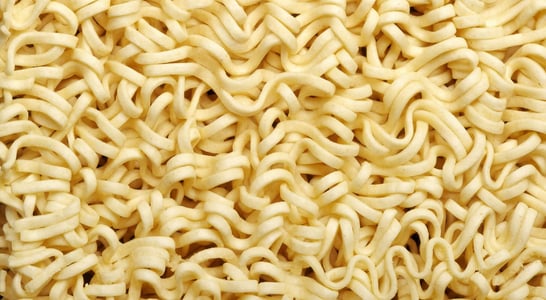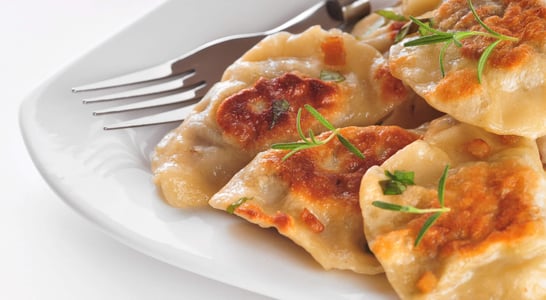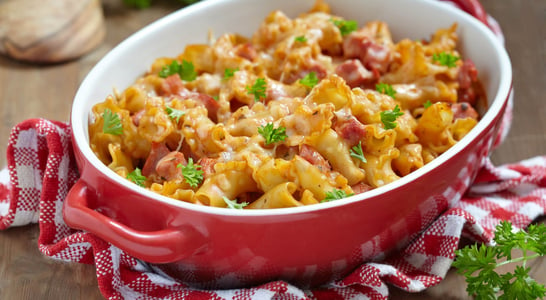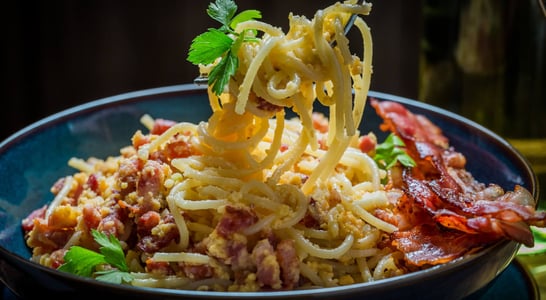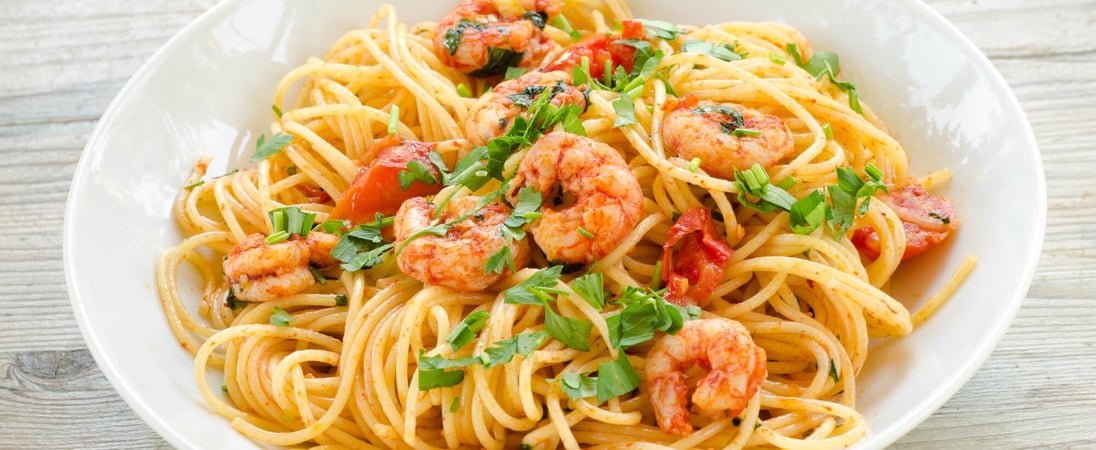
National Spaghetti Day
Savor your favorite Italian dishes from carbonara to meatballs, sign up to a pasta-making class or watch a thrilling Spaghetti Western.
One of the world’s favorite dishes, spaghetti is more than deserving of its own little day. And because it is both simple and delicious, spaghetti is the perfect dish to make to bring out your inner chef, even if you don’t have all that much cooking experience!
How to Celebrate National Spaghetti Day
Enjoy Eating Spaghetti
Above all else, National Spaghetti Day is the perfect excuse for indulging in your favorite spaghetti dishes. Even if you don’t spend much time in the kitchen, a hearty bowl of spaghetti topped with a simple tomato sauce or a store-bought alternative should do the job nicely.
Try New Spaghetti Recipes
The more adventurous cooks out there will be pleased to know that many cooking websites publish new recipes to celebrate National Spaghetti Day, increasingly with gluten or dairy free options.
And if you’re a budding Michelin star chef, why not try making spaghetti from scratch? A pasta maker is a plus, but you can also make your spaghetti strands using a rolling pin and a knife. Spiralizing vegetables is another way to produce a non-typical variant of this beloved classic.
Order Spaghetti at a Restaurant
If home-made spaghetti doesn’t take your fancy, then you can always head over to your local Italian restaurant.
Lots of restaurants will put on special deals and discounts to celebrate National Spaghetti Day, so make sure to check out what’s on offer near you.
Just beware that you may need to book in advance as it’s likely to be a popular day! And once you’re suitably full, you can always crash out on the sofa and enjoy a good Spaghetti Western.
Try Other Types of Pasta
Spaghetti’s versatility is one of its many charms, so why restrict yourself to spaghetti in its long, thin form? Nowadays spaghetti hoops are very popular, proving to be a much less messy option and so especially appealing to parents of young children!
Spaghetti sandwiches are big in countries such as Japan and Australia, and Filipino spaghetti is well-loved in the Philippines with its sweetened sauce.
Continuing on the sweet theme, you could even try spaghettieis, an ice cream dish designed to look like spaghetti that originated in Germany.
Take a Pasta Making Class
For a fun day out, you might like to consider a pasta-making class. Culinary courses are a great way to learn a skill from the experts, meet new people and cook delicious foods you never knew you could!
Spaghetti is best enjoyed in the company of friends and family, so however you decide to mark the occasion, make sure to get your loved ones involved.
History of National Spaghetti Day
Many people don’t know that the first historical reference to boiled noodles suggests that the Arabs invented the dish thousands of years ago, long before it became a staple of Italian cuisine.
What’s especially remarkable about this is that historical records actually refer to dried noodles being purchased from a street vendor, which means that pasta has been sold in stores since at least the 5th century A.D.!
Of course, today we associate pasta with the Italians, who revolutionized the dish and invented a wide variety of pasta shapes.
The first Western pasta was likely long, thin forms made in Sicily around the 12th century; till this day, spaghetti is the most common round-rod type of pasta and in Italian, “spaghetti” means “little lines.”
However, the popularity of pasta only spread across the whole country of Italy after the establishment of pasta factories in the 19th century, substantially shortening the time needed for making dishes like spaghetti and enabling the mass production of pasta for the Italian market.
The steady flow of Italian immigrants to the United States brought traditional Italian dishes with it, and spaghetti was offered in restaurants as early as the 19th century.
Spaghetti then gained popularity all over the world, with Venezuela, Tunisia and Greece some of the biggest pasta consumers, alongside Italy and the United States.
The US, for example, will consume over two and a half million metric tons of pasta over the course of a year, a significant proportion of which will be spaghetti!
National Spaghetti Day Timeline
1154 A.D.
Edrisi mentions pasta made in Sicily
In his vitally important work, The Book of Roger, explorer and author Edrisi (or Idrisi), chronicles his observations of a Sicilian town called Trabia. He writes about how the inhabitants make pasta from wheat, shaped into long strands, and export the product for sale in other regions.[1]
13th Century
Spaghetti-like noodles arrive with Marco Polo
One story about the origin of spaghetti involves spaghetti-like noodles being brought back from China by explorer Marco Polo. The first versions of this are likely made from rice flour but perhaps evolve into something made from the more available durum wheat grains.[2]
1928
Chef Boyardee’s canned spaghetti hits the market
Named after Italian immigrant and restaurant owner Hector Boiardi, this company develops after locals want to buy this delicious sauce to take home in cans. The demand eventually catalyzes the convenience foods of canned pasta, including spaghetti, ravioli and other noodles.[3]
1953
First “National Spaghetti Day” is promoted in Washington, USA
In an effort to get people to come to the restaurant, Horton’s of Walla Walla, Washington, ran promotions declaring every Thursday as “National Spaghetti Day”.[4]
1969
The first Old Spaghetti Factory opens
Run by Guss and Sally Dussin, this quintessential family restaurant launches in Portland, Oregon, USA and features a family favorite recipe for Spaghetti with Mizithra Cheese and Browned Butter.[5]
How to Make Spaghetti
Spaghetti is made from milled wheat (flour) and water and comes in both fresh and dried forms. Traditionally it’s made using durum wheat that’s roughly ground – the flour produced is ideal for making pasta as its coarseness helps bind it to the sauce.
Nowadays there are of course a variety of other types, including wholewheat and gluten free options.
Once prepared, the dough can be turned into the classic spaghetti shape either by hand or by a machine, whether a pasta machine in a home kitchen or an extruder in a factory. Whatever the method for forming the pasta, it’s important to dry it carefully to avoid any spaghetti strings getting stuck together!
Although wholewheat is generally considered healthier than refined spaghetti, there are benefits to both types.
While refined spaghetti is likely to contain higher amounts of iron and B vitamins, wholewheat contains more fiber and micronutrients along with fewer calories.
Whichever type you prefer, spaghetti is rich in carbs and so is best enjoyed as part of a healthy diet – a nutritious sauce is therefore a great addition when eating spaghetti.
How to Cook Spaghetti
Although a relatively easy food to cook, there are still some tricks worth knowing for the perfect result. It’s a good idea to cook spaghetti al dente – firm but not crunchy!
Chefs have various tips for preventing the pasta from sticking together, including using a pan that’s big enough, mixing some oil in with the water and ensuring that the water is boiling before adding the spaghetti (as the bubbling helps keep the strands moving). Seasoning the water before cooking will also ensure your spaghetti is nice and flavorsome.
Another top tip is to keep hold of what chefs refer to as ‘liquid gold’ – the starchy water produced by cooking pasta.
While many of us simply drain this away once our spaghetti is ready, it can actually help emulsify and thicken the sauce. With spaghetti you can simply remove the pasta from the pan using tongs rather than a colander to save and make the most of this precious liquid.
When it comes to the sauce, there are many well-known spaghetti dishes, for example Bolognese and carbonara. Spaghetti and meatballs is another particularly popular option. Whatever your preferred sauce, be sure to season well with herbs such as basil, rosemary and oregano.
Spaghetti in Popular Culture
With their distinctive soundtracks, extreme violence and socio-political bent, Spaghetti Westerns such as Django, A Fistful of Dollars and The Good, the Bad and the Ugly became popular in Hollywood during the 1960s.
Although these films had no relation to the food itself, the name of this movie sub-genre does highlight how synonymous spaghetti had become with the country of Italy, with Spaghetti Westerns also called Italian Westerns due to them stemming from Italian filmmakers.
One of the most iconic instances of this delicious dish in popular culture has to be the famous spaghetti eating scene in Disney’s Lady and the Tramp, where the two pooches, serenaded by the restaurant’s chefs, accidentally eat the same piece of spaghetti.
Tramp even gives Lady the last meatball – if that’s not true love then what is!
With spaghetti so readily available in food shops, it’s no wonder that many of us know relatively little about its production process.
Back in 1957 the British Broadcasting Company (BBC) played on viewers’ lack of knowledge to orchestrate what’s now known as the ‘spaghetti-tree hoax’, a fake segment broadcast on April Fools’ Day that showed a Swiss family collecting dangling strands of spaghetti from trees.
Suffice to say many were fooled by the reputable broadcaster’s joke, with the BBC receiving a large number of phone calls from confounded viewers.
Bonus: Spaghetti Recipe
If you want to try your hand at rustling up a little something on the day, check out the following recipe.
Ingredients: (serves 2)
- 1/2 medium onion
- 1-1/2 tbsp olive oil
- 2 garlic cloves, peeled and crushed
- 200g tin chopped tomatoes
- 20g pack basil leaves, chopped finely
- 200g dried spaghetti (roughly half of a 500g pack)
- 100g ball mozzarella
- a few pinches of salt & a bit of oil for the pasta
Preparation
- Peel the onion and the garlic and chop both finely. Set a large frying pan over medium heat and when hot, pour in the oil then add the onion. Cook the onion for about 4-5 mins, or until it softens, stirring occasionally. Add the garlic, cook 2 mins more until fragrant. Then, add the tomatoes and half the basil. Leave to gently bubble for 15 mins or so, stirring occasionally–the sauce should become thick and pulpy. Break up any large clumps of tomato with the back of a wooden spoon.
- Pour water ¾ of the way up your largest pot. Heat over a high heat and add several large pinches of salt and a spoon or so of oil. When water has reached a rolling boil, put the spaghetti in it. Giving it a stir every now ad then stir to separate the pasta, cook it according to pack instructions, usually about 10 mins. Before you finish cooking it, taste a strand of the pasta. It should be just soft, but not mushy. Scoop out a cup of water before draining and set aside (this will help to loosen your sauce). Put the drained pasta back into its cooking pan, then pour in the tomato sauce.
- Give everything a good stir. The sauce should just coat the pasta, but if it is thick and looks dry, stir in a few spoons of the pasta water you set aside before. If it is watery, cook over a low heat for 2-3 mins or until evaporated, stirring often.
- Use your hands to break the mozzarella into chunky pieces and stir through the pasta along with the remaining basil leaves.
- Serve straight away.
National Spaghetti Day FAQs
Did spaghetti really originate in Italy?
Though we think of spaghetti as Italian, pasta’s roots trace back to ancient China.
Early forms of noodles were common in China over 4,000 years ago. The Arab traders likely introduced these to Sicily in the 12th century.
It wasn’t until later that Italians crafted the durum wheat version we know as spaghetti.
What is the ‘spaghetti tree’ myth?
In 1957, the BBC pulled an April Fool’s prank, airing a mock documentary about spaghetti growing on trees in Switzerland.
Viewers believed it, and many called the BBC to ask how they could grow their spaghetti tree—a testament to spaghetti’s popularity.
How do different countries add their twist to spaghetti dishes?
Spaghetti takes on local flavors globally! Thailand adds a spicy touch with “drunken noodles,” using chili and garlic.
In Japan, “Spaghetti Napolitan” features ketchup and mushrooms, while in Mexico, it’s common to find spaghetti in a creamy chipotle sauce.
Is there a spaghetti dish without sauce?
Yes! Spaghetti aglio e olio, from Naples, is a simple Italian recipe with just olive oil, garlic, and red pepper flakes. It’s a minimalist dish that highlights the pasta’s texture and is still incredibly popular in Italy.
Why do Italians only use forks to eat spaghetti?
Italians avoid using spoons with spaghetti, considering it a mark of dining sophistication. This contrasts with American practices, where people often use a spoon to help twist the noodles.
What’s the story behind spaghetti alla puttanesca?
Legend has it that spaghetti alla puttanesca, a tangy dish with tomatoes, olives, capers, and garlic, was invented by a cook who was told to make a meal “with whatever garbage” he had.
The dish’s name, translating to “whore-style,” stems from this colorful history.
What’s the weirdest way people celebrate Spaghetti Day?
Some enthusiasts celebrate by throwing a spaghetti dinner with a “no utensils” rule, where diners have to eat spaghetti with their hands.
Others host ‘spaghetti throwing’ events, testing if spaghetti strands stick to a wall as a sign of doneness.
How did spaghetti become a staple in America?
Spaghetti’s journey to America began with Italian immigrants in the late 19th century, but it wasn’t widely embraced until American soldiers returned from Italy after WWII with a taste for it.
The dish soon appeared in canned versions, making it even more popular in American homes.
Does Italy actually serve spaghetti with meatballs?
Contrary to what many think, spaghetti with meatballs is more of an Italian-American invention.
In Italy, meatballs are generally served separately or with different types of pasta. Classic Italian spaghetti dishes often feature simpler sauces or seafood.
What is the traditional length of a spaghetti noodle?
The traditional length of dried spaghetti is around 10 to 12 inches. Some variations, like spaghettoni, are thicker, while others, like capellini or “angel hair,” are thinner.
Each type brings a unique texture to the dish.
Need some inspiration?
Check out these videos for some extra inspiration in getting involved!
Also on ...
View all holidaysPop Music Chart Day
Groovy beats and catchy melodies that fill the airwaves, this musical genre is all about upbeat rhythms that get feet tapping and spirits soaring.
National Trivia Day
Get your thinking cap on and test your knowledge with fun facts, interesting tidbits, and brain teasers.
World Hypnotism Day
It's like a mind hack, slipping into a super-relaxed state, and suddenly, the solutions to your problems can appear.
Tom Thumb Day
In the 19th-century, a pint-sized boy became a sensation, performing daring feats and charming audiences with his wit.
We think you may also like...
National Noodle Day
Spaghetti, ramen, ziti, egg noodles…most of the best foods are noodles. Try a new kind today, or go out and treat yourself to one of the world’s favorite dishes.
National Pierogi Day
A tasty flour-and-egg dumpling filled with your choice of meat, potatoes, cheese, onions, all that good stuff…it’s no wonder the whole world loves pierogis.
National Mac & Cheese Day
Diving into a warm, comforting bowl of cheesy goodness, each forkful a delightful blend of creamy and savory delight.
National Carbonara Day
Rich pasta, melding salty pancetta, creamy egg, and Parmesan—a flavor dance that captivates discerning palates effortlessly.




